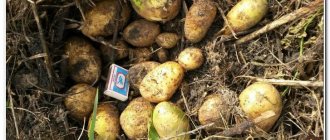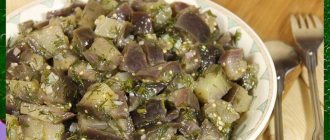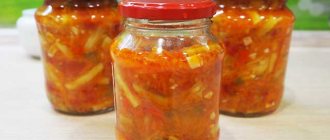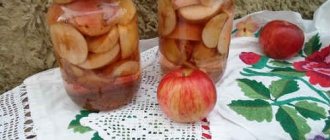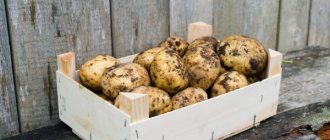What varieties of potatoes to choose for storage
Every autumn, happy owners of premises for long-term storage of vegetables rush to stock up for the winter. At the same time, every time they think about which potatoes are best stored. During this period, farmers are in a hurry to sell their harvest, so the choice of potatoes and their cost are especially pleasing.
What does keeping quality depend on?
Keeping quality is the property of potatoes to be preserved for a long period of time without significant loss of weight, damage by various diseases, or deterioration in marketability, taste and seed qualities.
Potato stocks for the winter
NSU All-Russian Research Institute of Potato Farming named after. A.G. Lorch developed a method for predicting the keeping quality of potatoes. Of course, this is primarily necessary for potato producers, but ordinary buyers can also use this technique. It includes the study of external factors such as humidity and type of soil in which the tuber was grown, the method of harvesting and loading the tubers into storage. There are other characteristics that the consumer cannot see with his own eyes.
But it is possible and even necessary to consider internal factors. These include:
- characteristics of the variety (resistance to late blight and mechanical damage, ripeness, size and weight of potatoes);
- storage method (container, bin, bulk);
- storage conditions (drying potatoes, room ventilation);
- characteristics of the tuber (degree of damage, prevalence of diseases and pests, level of elasticity).
Before purchasing potatoes in large quantities, it is recommended to use the “bag method” to determine the quality and keeping quality of potatoes. To do this, buy 1 kg of the vegetable you like, and possibly several types, place it in separate bags, which are tied and stored in a cool place (15-20°C) for two weeks. The bag creates a microclimate that promotes the rapid development of diseases, if any.
Attention! If the potatoes in the bag are all or more covered with spots of late blight, wet rot or other diseases, such potatoes are not suitable for long-term storage.
And if the tubers remain undamaged, you can safely purchase it and be sure that this variety will be stored until the new harvest.
Wet rot can destroy the entire potato supply
Which potatoes last longer, red or white?
Its color has absolutely no effect on the shelf life of the vegetable. Among the huge number of species, you can choose those that winter well with both red and white skins.
The color of a potato affects its other qualities. For example, white potatoes contain more starch, so they cook better and are suitable for mashing. And pink is more often used for frying and preparing salads.
Red potatoes contain more antioxidants, so they are more often recommended for dietary purposes. And the vitamin A content in yellow potatoes is twice as high as in white and red ones.
Attention! The right thing to do is not to stop at one type of potato, but to choose several varieties with different tastes for storage.
Canned potatoes “country style” for the winter
The simplest recipe for potato preparation, for the preparation of which you need:
- three kilograms of potatoes;
- 0.45 l. vegetable oil;
- 30 ml. vinegar 9%;
- half a kilogram of onions;
- 35 g of sugar and the same amount of salt.
Cooking steps:
- Chop the onion and fry in sunflower oil.
- Add sugar to the onion, pour in vinegar and salt.
- Cut the peeled potatoes into small cubes.
- Place the potatoes in a saucepan and cook for one hour on low heat.
- Transfer the potatoes into prepared jars, cover with metal lids and sterilize for 15 minutes.
- Close with lids and place in a cool place.
Why are mid-late and late varieties recommended for wintering?
The ripening time of potatoes is an important indicator when choosing a variety for storage. Potatoes with medium or late ripening periods last the longest.
Early varieties have too thin skins that cannot store potatoes for a long time
Tubers of early varieties have a very thin skin and the tubers quickly become lethargic and lose their taste. They will lie in the cellar for 1-2 months and even under ideal conditions they will last until November at best.
For reference! Early varieties can be stored in the cellar if such potatoes are consumed as a priority.
Medium varieties, which have a ripening period of up to 100 days, are grown for winter storage; potatoes have a shelf life and do not germinate until spring.
Storage conditions
Let us now look at the conditions that you must comply with.
Temperature
Try to keep the storage temperature approximately the same at all times. If you do not comply with this requirement and allow the temperature to drop sharply and rise sharply, the potatoes will begin to freeze, therefore, they will spoil faster and their beneficial properties will decrease.
To slow down potato germination, place 2-3 apples in a box.
Cover the potatoes with a cotton rag or burlap. Uncovered potatoes can freeze if the temperature drops suddenly.
The optimal storage temperature in winter should be from +2 to +4 degrees, up to +10 C is acceptable, but no more. At higher temperatures, the tubers are stored for about a month, then they lose moisture, shrink and begin to germinate.
To monitor your temperature, install a thermometer and monitor changes constantly. When the temperature drops, cover the potatoes; when the temperature rises, turn on the ventilation or open additional air vents.
If the temperature in the storage drops to -1 degree or lower, the potatoes freeze and become sweet, and then quickly spoil.
Potatoes may “depart” from freezing. To do this, you need to bring it into a room with a temperature of +10 degrees for 2 weeks - the taste will gradually be restored.
Air humidity
The air humidity in the storage should be 70-85%. To measure it, purchase a special device - a hygrometer. To combat excess moisture, you can cover the floor with moisture-absorbing materials - quartz sand, pebbles.
Beets absorb moisture very well - spread them in a thin layer directly on the potatoes.
Provide good air circulation to help regulate humidity. High humidity provokes the appearance of fungus, low humidity causes changes in structure and flabbiness. Therefore, it is necessary to establish and maintain optimal humidity in the storage.
Light
There should be no constant light in the storage, otherwise the potatoes will turn green. In the light, the production of a toxic substance, solanine, increases, which gives the green color to the peel.
Tara
There are special containers for potatoes and other vegetables:
- Wooden boxes are considered the best storage containers. The open top and loose planks promote good air exchange.
- Plastic containers are good because they can be placed one on top of the other; there is always a gap between them, so ventilation occurs. This is a neat, clean and not at all expensive container. Often such vegetable containers are simply thrown away by hypermarkets - you can get them for free.
- Their canvas bags are great for winter storage of potatoes. They can be stacked on top of each other if you need to save space.
Polypropylene bags can only be used for transporting potatoes; they are not suitable for winter storage, since the potatoes will not “breathe” in them.
If there are mice in the garage, use iron barrels and metal mesh.
If the room is not flooded and there are no rodents in it, store potatoes without a container. Place the tubers in bulk in a fenced off corner, in a pile no more than 1.5 meters.
Early potato varieties for long-term storage
Despite the fact that early potatoes are created for a quick harvest and are not subject to long-term storage, there are exceptions.
Red Scarlet (Holland)
The Dutch vegetable, which has taken root in Russia due to its taste, is an early ripening vegetable. Young potatoes begin to be dug up after 45 days, and full ripening occurs after 70-80 days.
External signs of Red Scarlet:
- shape - elongated, oval;
- peel color - pink;
- pulp color - light yellow;
- the texture of the peel is velvety;
- the eyes are small, shallow, yellow.
Starch content 10-15%.
Important! The higher the starch content, the less the potatoes are overcooked, and their taste improves.
When cooked, the vegetable crumbles slightly, but does not become overcooked, and retains its shape. It is not suitable for making purees, but it is ideal for French fries, frying, and making chips.
The variety is resistant to rot, making it easy to store. Long-term winter storage is possible under favorable conditions:
- air temperature +1..+5°C;
- complete absence of sunlight;
- insulated room;
- good ventilation on all sides.
Udacha (Russia)
The variety is early, ripens in 70-80 days, suitable for consumption and storage in the summer-autumn period.
Characteristics of tubers:
- shape - round;
- size - large, the weight of one tuber reaches 200-250 grams;
- peel color - light brown;
- peel texture - smooth, thin;
- the eyes are small, shallow, sparse;
- The color of the pulp is white; when cooked, it becomes slightly yellow.
Starch content - 12-14%, retains its shape when cooked, suitable for salads, frying, stewing, baking.
The average storage time is 5-6 months, with 80-90% of the potatoes preserved.
Rosara (Germany)
An ultra-early variety that reaches ripeness after 65-70 days.
Description:
- shape - oblong-oval, sometimes teardrop-shaped;
- size - one-dimensional, weighing up to 110 grams;
- peel color - red-pink;
- the texture of the peel is slightly rough;
- pulp color - light yellow;
- eyes small, shallow.
Starch content - 12-14%. Rosara is not overcooked and is used for preparing first courses, salads, and side dishes. Remains firm when fried.
Important! This variety is resistant to late blight and gray rot, transports well, and is suitable for long-term storage under favorable conditions.
Rosara Potatoes
Medium potato varieties for long-term storage
Medium varieties are suitable for long-term storage; they retain their taste and appearance until spring, with virtually no loss.
Gala (Germany)
Gala is a mid-early variety with good taste and resistance to many diseases.
External characteristics:
- shape - round, slightly elongated;
- size - average from 70 to 120 grams;
- pulp color - yellow;
- peel color - bright yellow;
- the texture of the peel is smooth, slightly flaky, durable;
- the eyes are purple, slightly deepened.
Starch content - 14%, does not boil soft. The keeping quality of Gala reaches 90%, the tubers are well stored without losing their qualities.
Nevsky (Russia)
People also call Nevsky blue-eyed. It belongs to the mid-early variety, with a ripening period of 90 days.
External description:
- shape - round;
- size - average 90-130 grams;
- pulp color - white;
- peel color - light beige;
- peel texture - smooth, even;
- the eyes are purple, deep.
Potatoes contain only 12% starch, which is why they are considered dietary. Suitable for making soups and salads, but not suitable for frying or mashing, as it does not boil at all, the potatoes remain hard.
The keeping quality of the variety is high; 96% of the potatoes remain until spring, but then, even at low temperatures, they begin to germinate.
Important! Before storing it in the cellar, be sure to dry it thoroughly.
Rocco (Holland)
Refers to varieties with an average ripening period of up to 90 days. Taste qualities are characterized as excellent.
External characteristics:
- shape - oval-rounded;
- size - medium up to 120 grams;
- pulp color - light cream;
- peel color - bright pink;
- peel texture - thin, smooth;
- eyes - sparse, shallow.
Buying potatoes in a store
You can, of course, not prepare potatoes, but buy them at the store. Moreover, reputable manufacturers write on the packaging for what culinary purposes this variety is most suitable: for cooking, for salad, for frying. Now they have begun to import foreign varieties from Holland, Israel, Poland, and domestic suppliers are not too lazy to provide such information. By the way, the quality of washed packaged potatoes is almost the same, and it’s up to you to decide which manufacturer you prefer.
With a starch content above 15 percent, the variety is more suitable for purees. If this figure is lower, then - for soup and salad.
In order for potatoes to be fried and not crumble in a deep fryer or in a frying pan, they must contain at least 20 - 24 percent dry matter. If there is no data on the package, then take it for a sample and evaluate the quality yourself.
A store is not a market where sellers will name the varieties they sell and their characteristics - there is information either down to hundredths of a percent or there is none at all.
Late potato varieties for long-term storage
Late varieties are the best potato varieties for winter storage. Some species can be stored until the next harvest without loss of taste and maintaining elasticity. Losses during long-term storage of late potato varieties are minimal. Which potatoes are best stored in winter? Below are two popular varieties.
Picasso (Holland)
Late-ripening Dutch variety, reaches full ripening after 130 days.
External characteristics:
- shape - rounded oval;
- size - large up to 140 grams;
- pulp color - cream;
- peel color - light yellow with pink spots around the eyes;
- peel texture - rough, dense;
- The eyes are pink and deep.
The starch content is 10-12%, does not darken or boil over.
Important! Picasso is one of the best varieties for winter storage. It is perfectly preserved and does not sprout during storage.
Potatoes Picasso
Zhuravinka (Belarus)
A good variety of late ripening, up to 120 days, proven for 20 years.
Description:
- shape - round;
- size - average 90-110 grams;
- pulp color - light yellow;
- peel color - bright pink;
- the texture of the peel is rough with a pronounced relief, of medium thickness;
- The eyes are small, light purple.
Contains up to 20% starch, boils well, is suitable for making purees, soups, potato zrazas, and is also used to obtain starch. Keeps well until next summer.
When choosing potatoes for the winter, varieties that are good for long-term storage, you should definitely remember about varieties with late ripening. You can buy a couple of bags of just such potatoes and use them in the spring.
Preparation for storage
Let's look at several steps to prepare fruits for storage.
Step 1: Sort
Large ones are for food, medium ones are for planting next year, small ones are for animal feed or destruction.
Step 2. Select affected tubers
Rotten, diseased tubers infected with a fungal bacterial infection must be destroyed so that the diseases do not spread.
Step 3. Remove soil and dry properly
Do not dry potatoes in the sun: they may turn green. Choose a place in the shade or in a dark room. The tubers need to be kept in a scattered state for 7-12 days so that they are completely dry and ready for long-term storage.
Step 4. Wash in manganese water solution
This procedure is not necessary, but it helps to significantly improve the preservation of tubers. I always do this. I pour warm water into 2 basins and dissolve manganese in it until it turns bright pink. I wash the potatoes first in one basin, then in another. Afterwards, you need to dry the tubers very well, scattering them so that they do not touch each other and turning them over every day.
Potatoes washed in manganese last all winter, “like new.” It is pleasant to use because it is clean and does not rot.
To wash or not to wash potatoes before storing
There are four stages of preparing potatoes before storage:
- Culling. Vegetables need to be sorted out, because potatoes with signs of disease, rot or damage will not be stored; they must be consumed first.
- Medicinal. The potatoes are dried and given time to ripen and heal mechanical damage.
- Cooling. Ideally, the storage temperature should be lowered gradually (by 1 degree per day) for better storage.
- Basic. During winter dormancy, potatoes need to be provided with favorable conditions. The storage location should not be exposed to sunlight, temperature 2-4 degrees, air humidity 85-90%.
Washed potatoes
Of course, washed potatoes look more beautiful than unwashed ones and are more convenient to use when processing and preparing dishes, but this process has many more disadvantages:
- a washed vegetable, if not properly dried, is susceptible to rapid rotting;
- during the washing process, the skin is damaged, which also contributes to rotting;
- The washing process is quite labor-intensive and requires large areas for drying.
Washing potatoes is recommended if the harvest was carried out in wet weather and it is necessary to remove a layer of dirt. If harvesting was carried out in dry weather, then it is enough to just dry the tubers.
What are the maximum shelf life
The duration of potato storage depends on many factors - varietal characteristics, weather conditions during cultivation, harvesting and transportation methods, storage conditions and much more.
Potatoes in the cellar
For reference! If all optimal conditions are met, potatoes can be stored for up to 10 months. At the same time, it will not lose nutrients, taste and will remain appetizing in appearance.
In winter, it is necessary to sort through stocks, removing rotting tubers. If beets are placed next to the potatoes, they will absorb excess moisture; pine branches, onion peels, rowan and fern leaves can also protect against rot.
There are a large number of potato varieties with different properties. It is better not to stop at one variety, but to purchase 3-4 different types for preparing different dishes. By being careful when choosing vegetables and following storage rules, you can enjoy delicious and aromatic potatoes from your own cellar on cold winter days.
